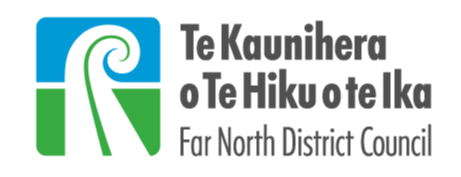Integrated Transport Strategy
The Integrated Transport Strategy sets out the District’s priorities to achieve a transport system that will best support the Far North and its people over the next 10-30 years.
Key objectives and features of the strategy
- Consideration of all transport users and modes
- Identification of key transport challenges facing the Far North
- Providing strategic guidance to respond to key issues
- Setting priorities for the District as to how money should be spent
- Guiding FNDC in their detailed approach to maintaining, operating, renewing and developing the transport network
- Inclusion of a prioritised list of transport activities
- Guidance on the programming of activities in the Regional Land Transport Programme (RLTP)
Strategy timeline
Council Endorsement
December 2020
LTP and RLTP public consultation
March 2021
Adoption and go-live
July 2021
Frequently asked questions
The Strategy (Integrated Transport Strategy - ITS) is the high level aspirational document that sets out what needs to be focussed on for us to progress towards achieving the desired state of our transport network. The Plan (Integrated Transport Plan - ITP) is the collection of projects and activities that will achieve that progress. Here’s a link to a summary of the key steps that we need to follow for NZTA’s programme business case process – it sets out the process quite well. https://www.nzta.govt.nz/assets/Highways-Information-Portal/Processes/Business-case-phases/Programme-business-case/NZTA-PBC-BestPracticeVisualGuide.pdf The ITS is the summarised public version of the strategic case “evidence collection and analysis interpretation” section. The ITP is the rest, or the ‘programme business case’ in NZTA language. The workshop we’ve just held is stakeholder engagement workshop 1, in the “alternatives and options development and evaluation” section. We will use a multi-criteria evaluation process to evaluate and package each option and then come back with a recommended prioritisation in the February workshop (stakeholder engagement workshop 2).
There will be only one long list comprising projects and activities in the draft plus all further items discovered through the workshop and online survey. We will group the projects into the Action Plan areas and prioritise within each group so that there is a prioritised list of safety projects, cycle projects etc. We will use the investment objectives measured using the Key Performance Indicators (KPIs) from the ITS for this prioritisation. We will test a number of programmes with varying funding allocations (e.g. High safety investment etc.) and recommend something that delivers best against the outcomes we are seeking.
The prioritised programme of projects and activities will be developed by stakeholders representing the views of the district wide community. The Transport Strategy and Plan transcends ward boundaries to deliver an improved transport network for the whole district. This was the essence of the Council resolutions. Priority will be set by how well each project delivers against the investment objectives we have included in the ITS. We will review the final recommendation and may want to put a ‘location-based overlay” if the priorities are too skewed towards a particular location.
We will present the performance of each project against the 6 weighted investment objectives, 4 wellbeings, and funding subsidy probability at a workshop with stakeholders. Stakeholders and elected members will then have the opportunity to challenge the results (we want to retain control over the initial scores, which we will do based on real, rather than anecdotal, evidence).
The Plan will explain its genesis and development and will present the preferred programme in a list format showing the projects or activities under their relevant categories, the investment objectives they satisfy, their costs, their funding sources, their implementation timescales.

